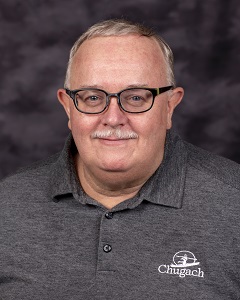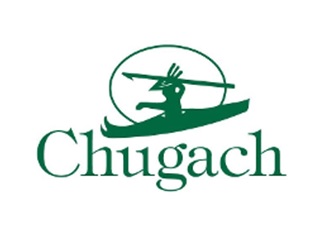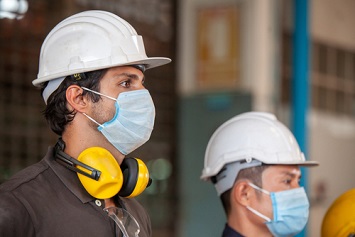Thomas Hawthorne knows what it means to live safety excellence every day. His organization, Chugach Industries Incorporated, has won not one but two EHS Daily Advisor Safety Standout Awards, the first in the Moving Beyond Compliance category in 2019 and then taking the top prize of Best Overall Safety Program and Culture in 2020. Read on for more on Hawthorne’s career, his advice on maintaining a world-class safety culture, and what it’s like being an essential safety professional during COVID-19.
How did you get your start in the environment, health, and safety (EHS) field?
After getting my bachelor’s degree in Environmental, Urban, and Geographic Sciences and going through a number of management training courses, I went to work for a hazardous waste remediation services corporation’s treatment, storage, and disposal facility (TSDF) performing field HAZMAT work and remediation activities. After 2 years, I was promoted to run the Environmental Services Field Operations Department.
In my first 2 years with the company, I had seen an increasing number of injuries and accidents, and I had spoken to the facility health and safety manager about better prevention. After continuing to see injuries and accidents increase, including two major injuries and several injuries to my own personnel, I decided to learn more about how to prevent these incidents from happening. I discovered many incidents were due to a lack of, wrong, or incorrectly issued personal protective equipment (PPE). After I was given the wrong PPE twice for highly hazardous work from the Facilities Safety office (which resulted in my experiencing severe acid and solvent burns), I decided that talking to the Facilities Safety personnel was not working, and I took some courses on safety/risk prevention and management on my own in an attempt to not let any more incidents occur, especially to my personnel or myself. I also concurrently went to my boss, the operations VP, and told him what I had seen/heard/experienced and what I was learning in the classes I was taking. He thanked me for taking the initiative and said he would investigate.
He called me back into his office the next day and said I was right, and he wanted me to take on the additional responsibilities of being the company field health and safety officer. I said I did not have sufficient training (even with the courses I was taking). He agreed and said he had looked up a number of additional safety training courses, and he would send me to them all. Though I was reluctant to take on a new field, my boss said to me that I could really make a difference, so I took all of the additional training—which was eye-opening—and I was hooked.
Chugach has won two Safety Standout Awards, and this speaks to its excellent safety culture. As safety manager, how do you go about consistently maintaining this culture of safety?
Our Safety Office takes a detailed, comprehensive, multipronged approach.
From the start, we emphasize safety. We begin with a detailed new employee orientation covering a comprehensive number of important subjects, and then, we follow up with the employee after this orientation to ensure the new employee understood everything. We don’t just talk at employees; we ensure back-and-forth communication and ask pointed questions to assess their base safety knowledge. The employee’s manager or supervisor also has the duty to follow up with the Safety Office with completed safety duties relating to the new employee and by effecting a safety tracking form with completed activities that is gone over with the new employee by management, signed by management and the employee, and returned to the Safety Office. We ensure orientations are interactive and that new employees know we have an open-door policy for safety and that they can call, e-mail, or stop by with any questions. We continue to check in on the employees to ensure they are acclimating. We also have the new employees immediately delve into our Good Catch program and know about our Good Catch Safety Awards. We encourage them to submit a Good Catch soon, as we know a new set of eyes can see issues everyone else may have become blind or complacent to. We challenge new employees to help make our safety culture better, and we ensure they have someone mentoring them until they are acclimated.
Our Safety Office involves all employees in the safety program from the top down—our management believes in safety as a key core principle, which cascades from our management team to our supervisors and down to all employees. After all, everyone is his or her own safety officer, right? We keep management in the mix on all safety successes and failures, and every meeting starts out with a safety moment. We ensure every member of our Chugach team practices our risk assessment philosophy—that everyone is a safety STAR, Stopping, Thinking, Acting, and Reviewing; if, during the review, they see room for improvement, find issues, or require changes, they start the STAR process again. This, along with situational awareness and looking up, down, and all around before starting work and during work (to see if anything has changed), is instrumental in keeping people safe. We take into account the influence of human performance on safety and try to get our employees to the optimal performance zone on this.
 Chugach Safety at Picatinny gets our employees the safety training they need, and we have a great interactive safety training program. Even when COVID-19 hit and we could not perform in-person training, we came up with interactive, challenging training programs, including multiple risk assessment challenges in which our people had to complete a risk assessment for a particular task or training subject. We grade these assessments and provide feedback to employees, their supervisors, and our management team, and we learn from this where we need to focus our attention. We have gotten tremendous positive employee feedback for our training program and have entered our new and improved COVID-19 remote training program as a Chugach Asset Management Program (CHAMP) innovation. We also follow up with newly trained employees to make sure the training was effective and stuck with them!
Chugach Safety at Picatinny gets our employees the safety training they need, and we have a great interactive safety training program. Even when COVID-19 hit and we could not perform in-person training, we came up with interactive, challenging training programs, including multiple risk assessment challenges in which our people had to complete a risk assessment for a particular task or training subject. We grade these assessments and provide feedback to employees, their supervisors, and our management team, and we learn from this where we need to focus our attention. We have gotten tremendous positive employee feedback for our training program and have entered our new and improved COVID-19 remote training program as a Chugach Asset Management Program (CHAMP) innovation. We also follow up with newly trained employees to make sure the training was effective and stuck with them!
We strive for great communication with our employees, using methods from safety spot-checks and work area inspections to easy-to-understand, eye-catching communications such as slogans, postings, and handouts so people understand how to apply what they see or read. When we talk to our employees about safety, we use probing questions that require much more than “yes” or “no” answers. We also ensure our personnel have effective communication—all field personnel have two-way radios, and we work in teams for handling hazardous activities.
The Safety Office also tries to leverage other outside information to improve our safety program by using other Chugach sites’ safety knowledge and sharing communications on our own lessons learned with them so we don’t repeat a mistake and so we can learn valuable lessons. We have also partnered with other industries and organizations to leverage their safety knowledge, such as sharing innovative ideas from our vendors’ safety and health newsletters and working closely with Army safety personnel to ensure we don’t miss anything. We actively participate in Army Safety Stand Down days and training so our people get a different perspective and a new knowledge base. We are also constantly gauging the effectiveness of our safety program and always trying to find new innovative ideas (Manny Ken, the mannequin for safety; “Carlia-Arluku,” a full-size native Alaskan standing figure as our safety communication hub; and interactive safety demonstrations). From reviewing our detailed business continuity plan (with emergency action planning for all emergent situations) to a detailed analysis of our top 10 hazards at Picatinny vs. the Occupational Safety and Health Administration’s (OSHA) top 10 citations, we believe safety is fully integrated into all our processes.
As a safety manager, I believe we should try not to be the “safety police” but instead work collaboratively with our employees. We explain why working safer is working better and what can happen if they practice unsafe behavior(s). We offer them corrective action information, not just stop work actions without explaining why and how there is a better way. We leverage their knowledge for solutions for issues—after all, they are the subject matter experts (SMEs)—and we help guide them where and when we can. We strive for 100% completion for all corrective actions on all incidents, from Good Catches to injuries. For all injury and property damage incidents, Chugach Safety conducts a detailed investigation and an After Action Review (AAR) with involved parties and all applicable management. We disseminate all Good Catches and the corrective actions. We have a great dedicated safety committee to help us, and we have a safety culture award each month to show our culture in action.
Lastly, we also believe in what we do. We don’t just talk safety—we breathe, eat, and drink safety. I know that any injury is one too many, and I sincerely want every employee to go home the way he or she came in. We are a family here, and I know our workers personally. Anyone who gets hurt is an emotional wound I don’t want to live with, as it carries a heavy weight. Safety is a duty, not just a job. Like any family, we have ups, downs, and issues—we know it is not a perfect system, and we are not perfect, but we strive to be the best we can at all levels. In the end, we believe what our safety motto states: “Safety today secures tomorrow.”
As a safety professional (and an essential worker) located just outside of New York City, how has the COVID-19 pandemic impacted your approach to safety at your worksites?
It influenced it tremendously. We were basically ground zero here in New Jersey. I learned more about the nuances of infectious diseases and influenza strains than I ever thought I would have to. I thought having multiple weapons of mass destruction (WMD) training classes would prepare me for this, but we weren’t dealing with a flu epidemic, which we have seen before, but a completely new strain of virus and one that did not act like any other strain I had seen before. Like Dr. [Anthony] Fauci has said, this virus runs the gamut from no effect at all to the horrible lingering sickness and death of victims and everything in between. Even Fauci said that in his long career, he has not seen anything like this. I also came to learn the COVID-19 pandemic was not like having an anthrax-laden letter sent in (again, which I trained for)—this was a whole new area, the likes of which had not been seen, and the only comparable situation in modern history was 102 years ago!
Being essential personnel, we had to keep working; we had to support the warfighters, and we felt it was an honor to do this. We had COVID-19 planning meetings first thing every morning for months to keep on top of this (and we are still having these meetings). We constantly consulted the state health department and the Centers for Disease Control and Prevention (CDC) for developments, and we looked at the disease and our work from every angle and looked into every way we could educate and protect our people. This was complicated by the fact that the CDC and the World Health Organization (WHO) did not agree on everything and was further complicated by quickly emerging developments. So, things kept changing, and people in our state and throughout this country kept getting sick. Plus, New Jersey’s approach became very conservative, which was needed, but it impacted all of our people’s daily lives. New Jersey only allowed indoor dining on September 4 (at 25% capacity), so we are still conservative but have maintained an infection rate below 1%, which is important.
Our lives will never be the same because of COVID-19. On top of that, I and my coworkers also had to watch many friends and colleagues lose loved ones to this insidious disease. It has changed me and others around me, and honestly, our world will never be the same because of it.
What’s your favorite job-related story that you like to tell others?
There are so many! One of the short ones is that I have always performed demonstration training with PPE to show how it protects people. Workers especially love demonstrations with safety glasses and hard hats. For safety glasses in particular, many times, someone says something to the effect of “These flimsy plastic glasses will protect me? Come on …,” but we have performed training demonstrations to allay these doubts. People get to witness the PPE taking a hit and still protecting the dummy (or the fruit) that is wearing the PPE.
When we were ending one major project (it was a 5-year assignment), I was touched when one of the workers on his last day handed me a pair of safety glasses, and one lens was impact-shattered but still intact. He said, “You saved my eye and probably my life.” He said that he hoped I could use them as part of the demonstration training classes I performed, and he said to remember that you people (us safety personnel, that is) do make a difference.
What do you like the most about your career in EHS?
I believe in people helping people, and I can’t think of many better ways to help people other than being in safety, aside from maybe being in the military, police, fire, or emergency services. Also, the constant learning has really helped me. I continue to learn new information daily and sometimes from unlikely sources. Recently, we have all learned how much our health professionals put their lives on the line to assist and save people and what they go through to do this. That revelation never fully hit me until this pandemic. So many valuable lessons have been brought into focus over the years thanks to health and safety.
I also love seeing people apply what they have learned in the training classes we give them. When I witness them helping others by correcting their unsafe behavior—for example, one worker telling another, “Hey, put on your safety glasses”—this helps me know our work is not in vain and that our people have each other’s backs. After all, again, we are all safety officers, aren’t we!
What advice do you have for people just entering or transitioning into the profession?
Talk to others in the field, ask a lot of questions, and see if someone will mentor you in EHS. I had a great but unusual mentor. He was a chemist, a certified industrial hygienist, a toxicologist, an expert in epidemiology, and a poet; he was a man of great faith, and during the really tough times, he used to say, “This, too, shall pass.” When it gets really rough, I still hear his voice saying that. He passed away several years ago. I have thought quite often over the last several months that if he were alive for this pandemic, he would have been such a great help with this horrible disease.
Another tip is read. Read a lot, and read on varied subjects, not just safety books. I mean, sure, read safety books, but also read books on management, on manufacturing, and on history—to paraphrase George Santayana from The Life of Reason, those who do not learn from history are doomed to repeat it. The best EHS professional, in my opinion, is well-rounded and keeps up on the myriad regulations and constant changes in the field but also knows a lot of other things and is always willing to learn. Finally, never, ever, ever think you have all of the solutions. Listen to what other people say, especially the people who do the work every day and are SMEs in their field, and always respond to people—they may not like your answer, but answer them!
| Thomas Hawthorne is the Safety Manager at Chugach Industries Incorporated (CII) at Picatinny Arsenal, New Jersey, where he has worked for over 11 years. His primary focus is workplace safety, and he strongly advocates safety as a team effort by empowering employees to go beyond compliance and stimulate a positive safety culture. Hawthorne has worked in the hazardous waste management field and has an extensive background in environmental science and environmental program management, has administered company medical emergency response teams, and has successfully managed numerous emergency response scenarios/actions. With over 30 years of dedicated service within the environmental and safety fields, he has encountered and strategically navigated some of the most dangerous emergency situations. Hawthorne fervently believes employee safety is his number one priority.
Chugach Industries Incorporated (CII) is a wholly owned subsidiary of Chugach Alaska Corporation, an Alaskan Native company that is committed to supporting its people and heritage. CII is the Base Operations Contractor for Picatinny Arsenal in New Jersey, where its work encompasses myriad operations across the 6,500-acre military installation, including public works activities; logistics activities; IT/cyber activities; planning/estimating for new work; construction and construction management on minor and major projects; and procurement of materials and services for work performed throughout the installation. |

Would you like to be profiled in a future Faces of EHS and share your experiences, challenges, etc.? Or, do you know anyone else in EHS you think has an interesting story to tell? Write us at ehsposts@SimplifyCompliance.com and include your name and contact information; be sure to put “Faces of EHS” in the subject line.



